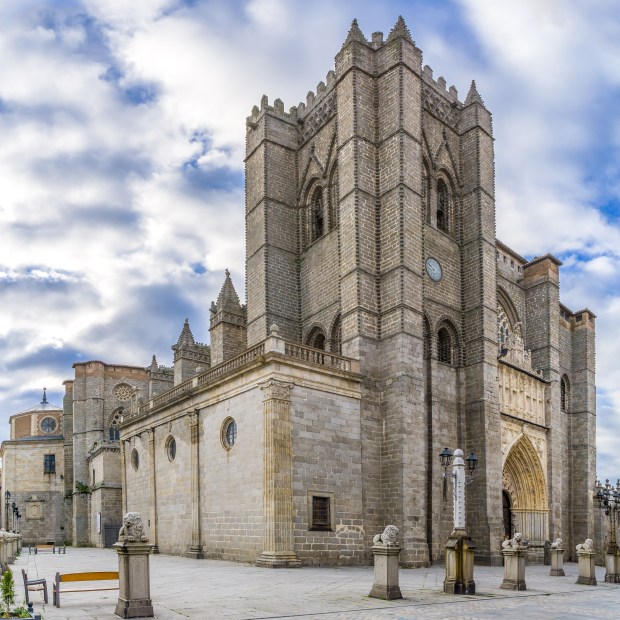St. Teresa of Ávila, the towering 16th-century mystic, reformer, and Doctor of the Church, shaped Catholic spirituality through her writings and her reform of the Carmelite order. Her legacy lives on virtually everywhere –but especially in the convents she founded and the cities that marked her journey.
These three destinations in Spain offer a deeper understanding of her life, mission, and spiritual influence.
1. Ávila – The saint’s hometown
“This castle has no need for walls—God alone suffices.”
The medieval city of Ávila is where St. Teresa was born in 1515. Its legendary stone walls, still standing today, surrounded the world where she grew up, first heard God’s call, and later returned to establish her first reformed Carmelite convent.
Key sites to visit:
- Convent of St. Teresa – Built over the site of her birthplace, this church and museum house relics such as her rosary, sandals, and writing desk.
- Monastery of the Incarnation – Where Teresa lived as a Carmelite nun for over 20 years before her reform began. Visitors can see her cell, personal objects, and handwritten texts.
- Ávila’s City Walls – The very walls Teresa walked past daily as a child, later comparing the soul to an interior castle with many rooms leading to God.
Ávila is about 90 minutes by train from Madrid and remains the most important city for those wishing to know St. Teresa.

2. Toledo – The turning point
Toledo played an important role in St. Teresa’s journey. Here she found influential spiritual advisors and noble patrons who supported her reform of the Carmelite order.
Key sites to visit:
- Convent of St. Joseph – One of the first convents founded under her Discalced Carmelite reform, still home to a Carmelite community today.
- Monastery of St. John of the Kings – A magnificent Gothic monastery that preserves the history of Spanish Catholicism in Teresa’s time.
- Toledo Cathedral – A spiritual landmark where Teresa likely prayed while in the city.
Toledo is a 30-minute train ride from Madrid, making it an accessible stop for those exploring Teresa’s world.

3. Alba de Tormes – The saint’s final days
In 1582, after years of writing, traveling, and establishing convents, St. Teresa arrived in Alba de Tormes, a town near Salamanca. She fell ill and died here on October 4, 1582.
Key sites to visit:

Walking the Path of St. Teresa
Pilgrims who want to experience St. Teresa’s journey in a more immersive way can follow the Camino de Santa Teresa, a route that connects 17 locations significant to her life. This spiritual path leads through the convents she founded and the cities that shaped her mission, offering travelers a way to encounter Teresa’s world through history, prayer, and reflection.
Make sure to visit the slideshow below to discover more of Teresa’s Avila.












